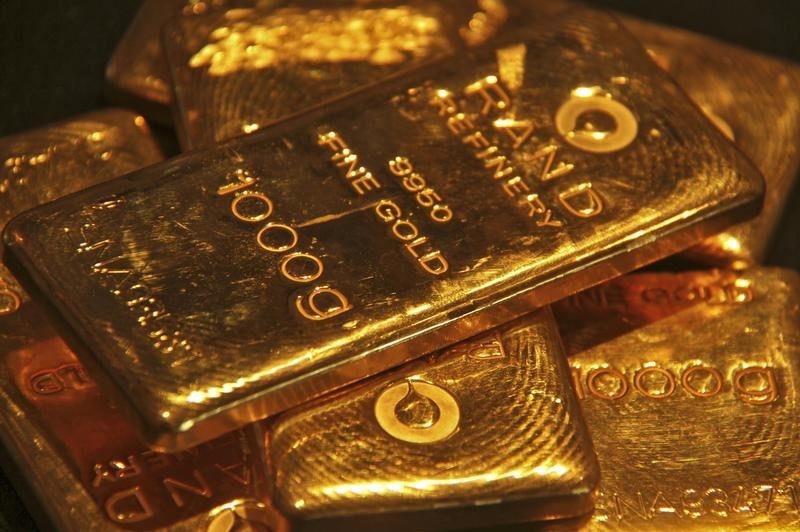Investing.com - Gold prices rose on Wednesday, as a softer U.S. dollar boosted the appeal of the precious metal, but gains were limited as market players prepared for a U.S. rate hike this month.
The dollar index, which measures the greenback’s strength against a trade-weighted basket of six major currencies, was down 0.6% to 97.80. Dollar-priced commodities become cheaper to investors holding other currencies when the greenback declines.
While investors widely expect the Federal Reserve to raise interest rates at its December 15-16 meeting, they anticipate the pace of increases to be gradual. A gradual path to higher rates is seen as less of a threat to gold prices than a swift series of increases.
Gold for February delivery on the Comex division of the New York Mercantile Exchange tacked on $6.90, or 0.64%, to trade at $1,082.20 a troy ounce during U.S. morning hours. On Tuesday, gold eased up 10 cents, or 0.01%, as market players started looking ahead to the Fed's upcoming policy meeting later this month.
Meanwhile, silver futures for March delivery jumped 16.4 cents, or 1.16%, to trade at $14.28 a troy ounce. Prices dropped 21.6 cents, or 1.51%, on Tuesday.
Elsewhere in metals trading, copper rallied on Wednesday, after data showed that Chinese consumer price inflation rose last month, indicating that Beijing’s effort to bolster growth in the world’s second-largest economy may be starting to take effect.
The National Bureau of Statistics reported that China’s consumer price index rose 1.5% in November from a year earlier, slightly better than economists’ forecast for an increase of 1.4% after a 1.3% rise in October.
China’s producer price index fell 5.9% on a year-over-year basis, matching October’s decline, the agency said. It was the 45th consecutive month of declining producer prices, amid weak demand and falling global commodity prices.
Market players now looked ahead to data on Chinese industrial production, retail sales and fixed asset investment for November due on Saturday for further hints on the strength of the economy.
The rate of economic growth in China slowed to 6.9% in the third quarter, according to official data, dropping below the 7% level for the first time since the global financial crisis.
China's central bank has already cut interest rates six times since last November and reduced the amount of cash that banks must set aside as reserves in a bid to shore up slowing growth.
The Asian nation is the world’s largest copper consumer, accounting for nearly 45% of world consumption.
